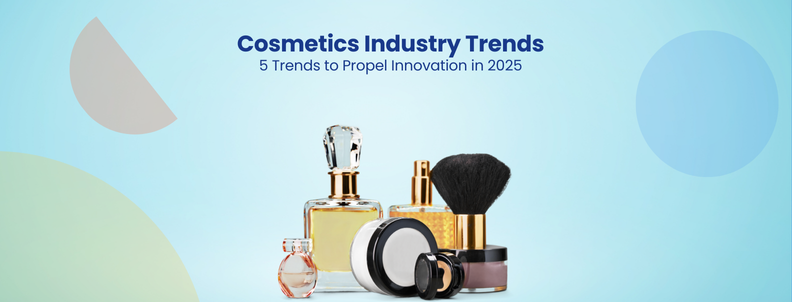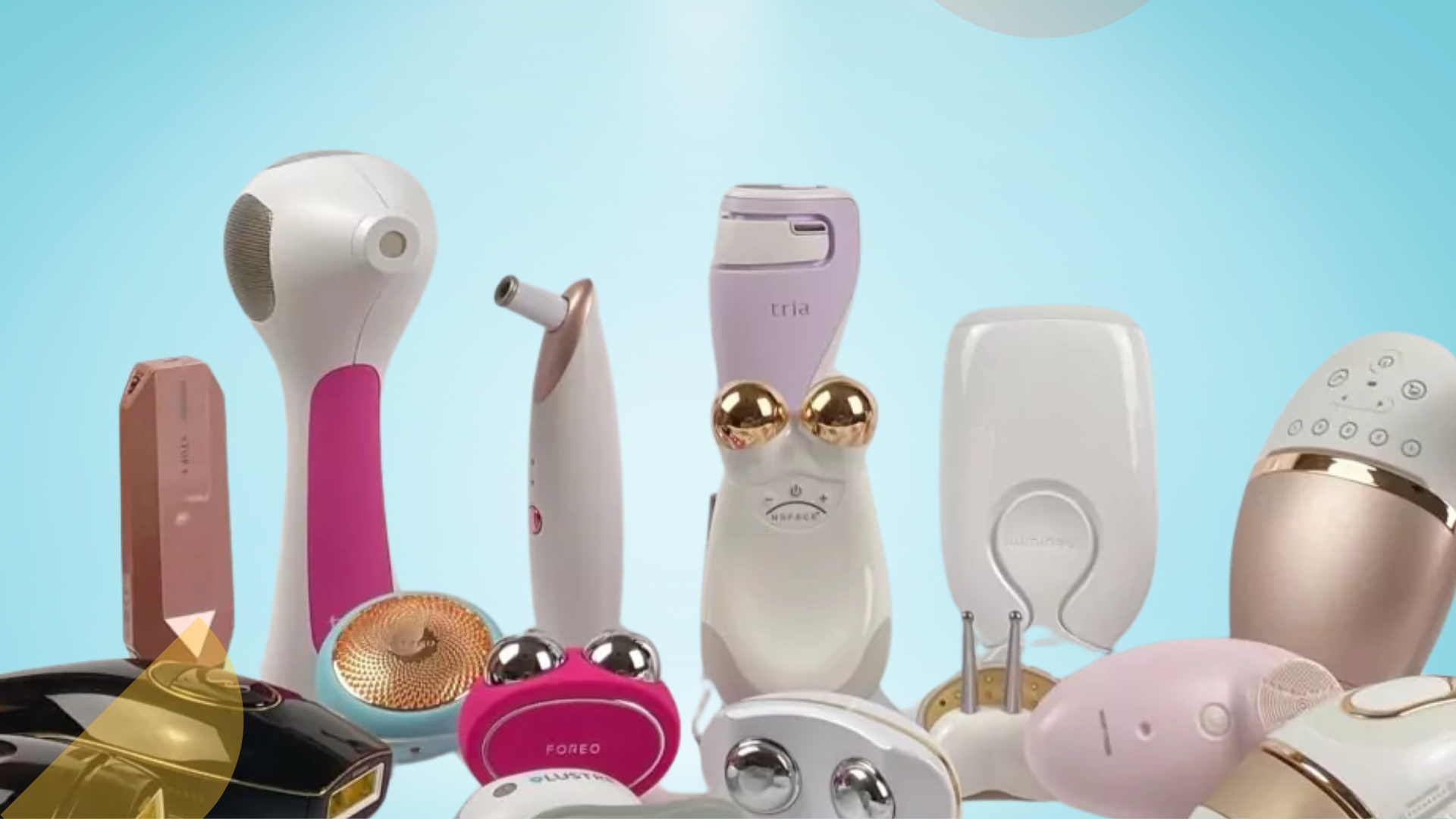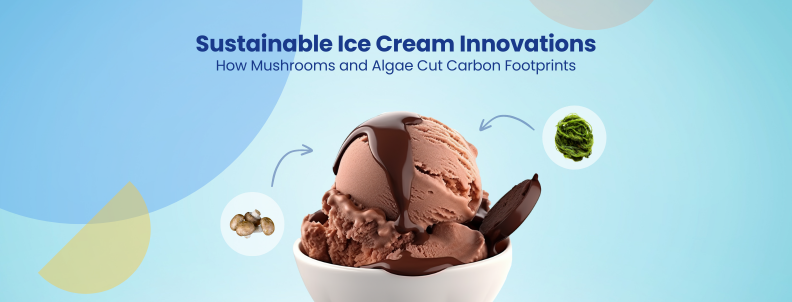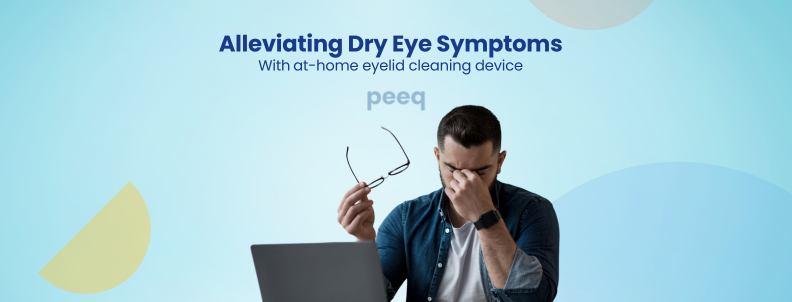The growing demand for sustainable, personalized, and scientifically-backed solutions drives brands to invest in advanced research and technology. One example is Estée Lauder’s partnership with Microsoft to create an AI Innovation Lab. The lab aims to accelerate product development while enhancing customer experiences through data-driven personalization. Such initiative highlights how technology and eco-friendly practices are shaping the future of beauty.
Despite these advancements, the industry still faces challenges, including stricter regulations on ingredient transparency, environmental impact management, and the integration of AI and biotechnology.
This growing demand for multifunctional and sustainable products makes it harder to balance innovation with practicality. For example, developing biodegradable beauty products requires advanced materials science, which can be costly and time-consuming.
While this article explores five key trends, our State of Cosmetics 2025 report discusses 10 industry trends, including innovations like peptides for hair loss, plant extracts for skin well-being, AI-powered age-optimized recommendations, and more. Fill out the form below to download your report!
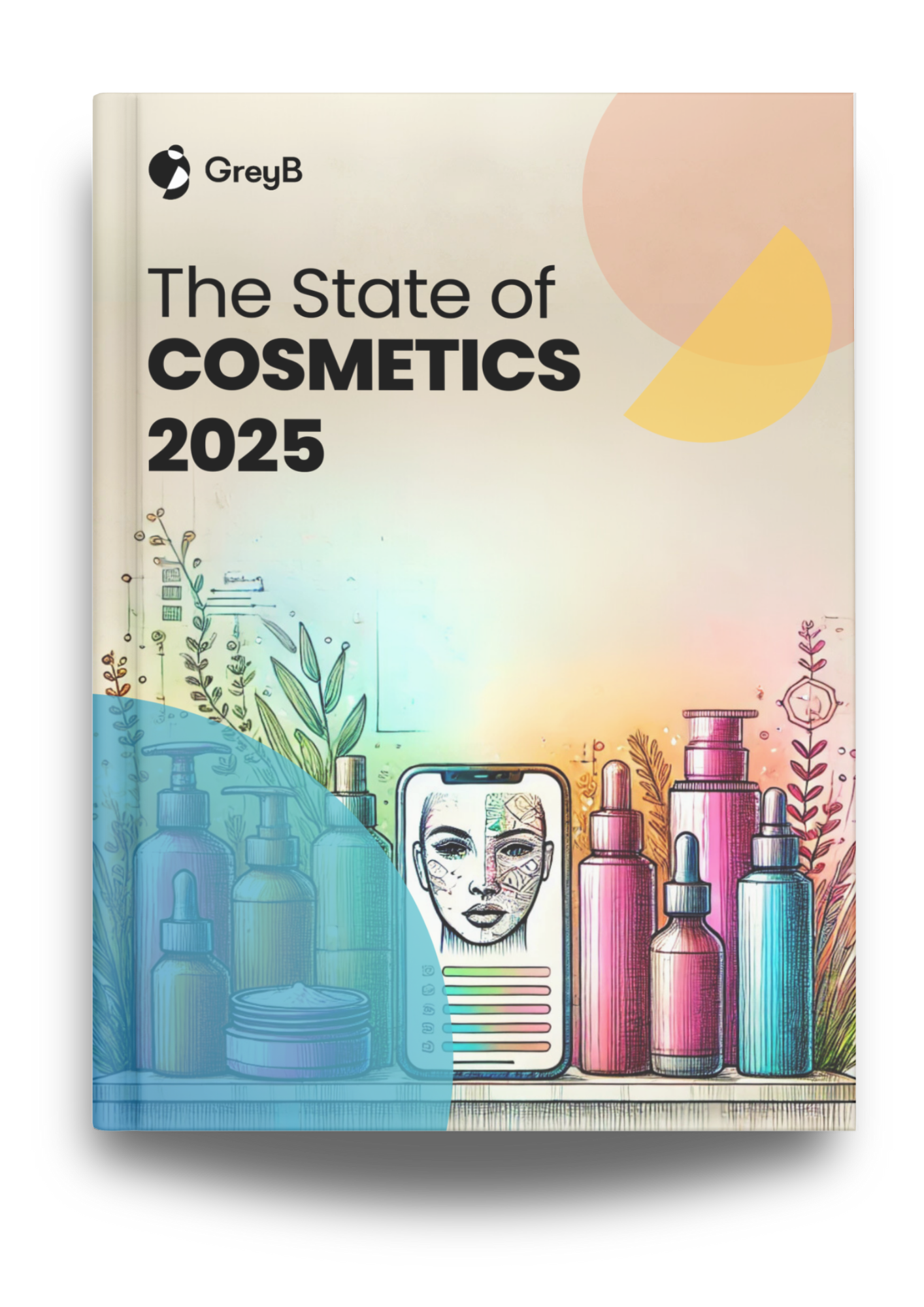
Trend 1: Revitalizing Skin with Algal Extracts for Hydration and Youthful Glow
While synthetic compounds are often effective, they frequently raise health and environmental concerns, compounded by the growing pressure to reduce ecological footprints and comply with increasingly strict regulations. Algae extracts have emerged as a promising solution, offering a unique blend of performance and sustainability that aligns with these trends. With its use in cosmetics projected to grow at a CAGR of 9.6% from 2024 to 2031, algae extracts are not only addressing regulatory demands but also capitalizing on the shift towards eco-friendly, high-performance ingredients.
Key Innovations in Algae Extracts for Skin
Replacing Hyaluronic Fillers and Corticosteroids: Naturally Boost Hyaluronic Acid and Reduce Inflammation
| Innovation | Fermented algae and Codium fragile extract |
| Market Potential | Addresses the growing demand for gentler alternatives to salicylic acid and AHAs |
| Application | Lotions, creams, and wash masks |
The side effects of salicylic acid and AHAs, such as irritation and redness, limit their use in skincare products. As a result, there’s a growing demand for safer and more effective natural alternatives.


Ami Cosmetic and Durae Corporation have created a natural blend using fermented algae and Codium fragile extract. This blend, with concentrations ranging from 0.001 to 10%, boosts hyaluronic acid production and reduces nitric oxide levels, providing moisturizing and anti-inflammatory benefits. This innovative formula can be used in lotions, creams, and wash masks, offering a gentle yet effective solution for skin care.
Recommended Read
A Safer, Long-Overdue Alternative to Retinol for Skin Whitening and Anti-Aging
| Innovation | Chlorella protothecoides peptides |
| Market Potential | Capitalizes on the need for retinoid alternatives in the EU market |
| Application | Creams, foams, cleansers, sprays, and powders |
The strict EU retinoid regulations have led to a higher demand for alternative ingredients to combat wrinkles and fine lines.


Once again, Korean companies, like Daebong Life Science and Daesang Corporation, take the lead in developing an innovative solution using Chlorella protothecoides peptides. This natural extract helps lighten skin by blocking the enzyme that produces melanin. It also reduces wrinkles while boosting collagen production.
This versatile microalgae-based extract can be used in creams, foams, cleansers, sprays, and powders. Daebong LS has introduced a product called GoldRella peptide, which features this patented chlorella extract with over 60% plant protein, offering a powerful and natural approach to skincare.

Trend 2: Promoting Hair Growth and Scalp Health with Plant Root Extracts
While traditional chemical-based ingredients in hair care have been widely used, they often carry risks of irritation and potential long-term side effects. In contrast, plant root extracts like licorice root, ginseng, and turmeric are gaining attention as a safer, more biocompatible alternative. Their natural origins make them gentle on the scalp and hair and align with growing consumer demand for cleaner, more sustainable products.
As the cosmetic industry shifts toward herbal formulations, this approach represents a strategic move to meet market demand for effective, natural hair care solutions. With the global plant-based cosmetics market projected to grow at a CAGR of 6.7% from 2024 to 2031, this trend underscores the ongoing transformation toward clean beauty and improved product performance.
Key Innovations in Plant Root Extracts for Healthy Hair
Herbal Powder Blends: A Gentle Alternative to Zinc Pyrithione for Acne and Dandruff Without Irritation or Dryness
| Innovation | Herbal Powder Blend with Organic Acids and Active Ingredients |
| Market Potential | Meets the demand for natural alternatives to conventional antimicrobial ingredients like zinc pyrithione and selenium sulfide |
| Application | Shampoos, serums, and scalp treatments |
Conventional antimicrobial ingredients used in hair care to control dandruff (M. furfur) and acne (P. acne) bacteria can be harsh on the scalp and often don’t offer sustained benefits. In response, Tranlab, in collaboration with PEP Technologies (Indian brand “Mcaffeine”), has developed a novel solution using a blend of ground herbal powders such as coffee, tea, and cocoa combined with organic acids and active ingredients like salicylic acid, ginger root extracts, sophorolipids, and phospholipids.
An Alternative to Synthetic Dyes: Preserve Hair Color and Boost Melanin with Fermented Plant Extracts
| Innovation | Fermented Monoginasan Leaf, Kava Root, and Red Bean Extract for Hair Color Preservation |
| Market Potential | Addresses the need for natural solutions to prevent hair color loss and graying |
| Application | Shampoos, hair serums, and scalp treatments |
As we age, hydrogen peroxide builds up in hair follicles, diminishing melanin production and leading to hair graying. To combat this, Yegreena and HnB Well have introduced a fermented extract composed of Monoginasan leaf, kava root, and red bean.
The Monoginasan leaf helps suppress hydrogen peroxide activity, while kava root and red bean increase melanin production. Additionally, kava root’s kavalactone compound soothes and stabilizes the scalp, and red beans, rich in vitamins B1, B2, A, and minerals, provide nourishment.
This unique blend offers a synergistic effect, increasing tyrosinase activity and protecting hair from external stressors. It is ideal for use in shampoos, serums, and scalp treatments to prevent hair color loss and promote natural hair health.
Trend 3: Fermented Ingredients for Reducing Hyperpigmentation and Calming Inflammation
While commonly used, Ingredients like zinc oxide often fall short in efficacy and skin health benefits. In response, fermented plant extracts derived from roots, leaves, fruits, and bark are gaining traction as a safer and more effective solution. These extracts offer enhanced biological activity without the risks associated with chemical-based compounds.
However, conventional extraction methods, including natural fermentation, often struggle to yield high levels of active ingredients, limiting their functionality. To overcome this, the industry is innovating with new techniques to maximize the potency of these extracts. Additionally, underutilized plant parts like peels, which are usually discarded, are being explored for their potential in cosmetic formulations.
As consumer demand for natural and effective products continues to rise, the cosmetics industry embraces this trend, paving the way for innovative and eco-friendly formulations.
Key Innovations in Fermented Ingredients for Improving Skin Health
An Effective Alternative to Retinol and Hydroquinone: Fermented Pine Needle Extract for Anti-Wrinkle, Whitening, and Moisturizing Serums and Creams
| Innovation | Fermented Pine Needle Extract |
| Market Potential | Addresses the demand for multifunctional ingredients with anti-wrinkle, whitening, and moisturizing effects |
| Application | Serums, creams, and moisturizers |
Pine needles have long been known for their medicinal properties, containing terpenes with antibiotic, anticancer, and blood pressure-lowering effects. Building on these natural benefits, Daebong Life Science and Universal Corporation Limited have developed a fermented extract of pine needles that enhances its skincare potential.
This innovative ingredient offers multiple skin benefits by fermenting pine needle extract with lactic acid bacteria at 20-60°C for 2-10 days. It boosts hyaluronic acid production for improved moisture retention, inhibits tyrosinase for skin brightening, and reduces wrinkles by inhibiting elastase. Additionally, it provides anti-inflammatory effects by reducing nitric oxide levels and helps control sebum production, making it ideal for use in serums, creams, and moisturizers for comprehensive skin care.
A Gentler Alternative to AHA and Adenosine: Strengthening Skin Barrier and Moisturization with Hascarf, Sagebrush, and Calamus Perilla
| Innovation | Synergistic Blend of Hascarf, Sagebrush, and Calamus Perilla |
| Market Potential | Offers a stable and gentler alternative to AHA and adenosine in skincare formulations |
| Application | Lotions, serums, and barrier creams |
Alpha hydroxy acids (AHA) and adenosine are commonly used in cosmetic products to stimulate collagen synthesis and support epidermal keratinization. However, these ingredients often become unstable when exposed to light and heat, leading to potential skin irritation.
To solve this, Dermalab and Biocostech created a blend of hascarf, sagebrush, and calamus perilla. This combination strengthens the skin barrier, helps regenerate skin cells, and moisturizes, offering a gentler, more stable option for skincare products like lotions and serums aimed at improving skin health.
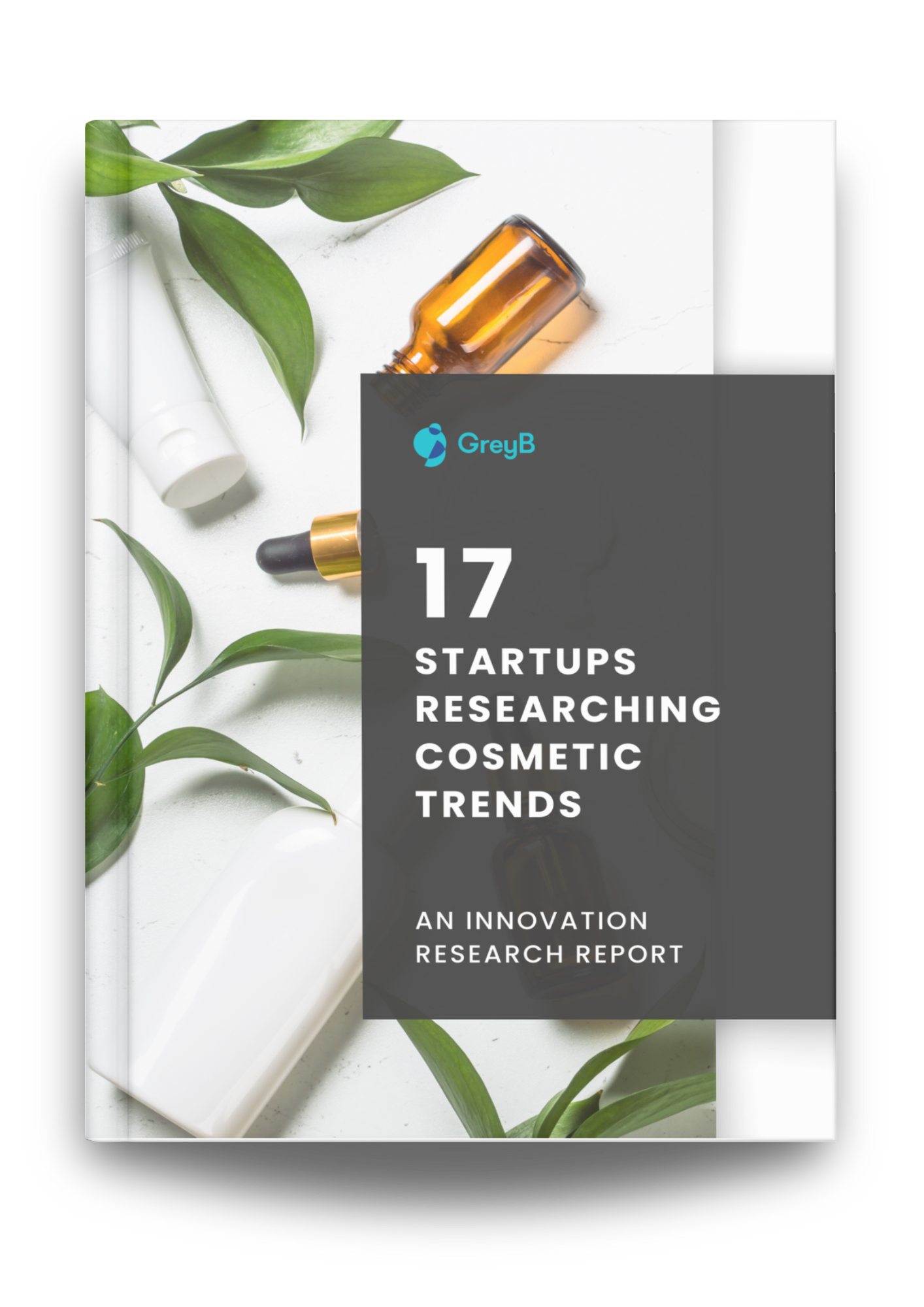
Innovative Cosmetic Startup Report
Download ReportTrend 4: AI-Powered Skincare for Personalized Recommendations Based on Skin Analysis and Concerns
The human skin is constantly exposed to pollutants and external factors that can cause significant damage, leading to various skin conditions. Traditionally, diagnosing these conditions required visits to dermatologists, which becomes costly, time-consuming, and difficult to access for many consumers. As a result, many delay or overlook their skin issues.
With the rise of smartphones and internet access, AI technology based on image recognition is emerging as a promising solution for diagnosing skin conditions. AI algorithms, trained on diverse datasets, can detect a wide range of skin issues, including life-threatening conditions like skin cancer, offering a more accessible approach to early detection.
However, challenges remain in ensuring the accuracy of AI-based diagnoses. The number of parameters AI uses is crucial in achieving reliable results. To address these concerns, advancements in AI technology focus on utilizing new techniques, incorporating more variables, and leveraging larger datasets to enhance the precision and reliability of skin condition detection.
Key Innovations in AI-Based Skincare for Personalized Recommendations
A Smarter Way to Traditional Consultations with AI-Driven Skin Analysis and Personalized Product Recommendations
| Innovation | AI-Driven Skin Analysis and Personalized Recommendation Platform |
| Market Potential | Provides advanced, data-driven skincare and cosmetic recommendations, leveraging machine learning for personalized solutions |
| Application | Smartphone apps, in-store kiosks, smart mirrors, and digital healthcare tools |
Lulu Labs, a Samsung spinoff founded in 2017, focuses on accurate skin data analysis and recommendation platforms. Their patented AI-powered system uses deep learning models, including pre-supervised learning, to diagnose and predict skin types and concerns, offering personalized product recommendations for skincare, makeup, and skin management.

The system utilizes a skin-measuring device, such as a smartphone or a detachable camera attachment, to capture the user’s image. This data is processed by a database management unit, which determines the skin type, diagnoses issues, and recommends cosmetics. The system also includes a personal color determination feature that analyzes the user’s facial and hair color to suggest makeup products. Over time, it tracks and evaluates skin conditions, providing insights through graphs and charts.

Lulu Labs’ solutions range from software development kits and in-store kiosks to digital healthcare tools, at-home smart mirrors, and smartphone apps designed to address skin-related concerns through personalized AI-driven recommendations.
High-Tech Substitute to Manual Shade Matching: AI-Driven Skin Tone Prediction and Personalized Makeup Recommendations
| Innovation | AI-Driven Skin Tone and Product Recommendation Technology |
| Market Potential | Enhances customer experience by providing precise skin tone matching and personalized product recommendations |
| Application | In-store devices, handheld scanners, and AI-driven product-matching systems |
Sephora, a leading beauty retailer, integrates cutting-edge technology to help customers find the best products for their skin. In collaboration with Pantone, Sephora introduced the SEPHORA + PANTONE COLOR IQ in 2013, a handheld spectro-colorimeter for accurate foundation shade recommendations.

In 2022, Sephora filed a patent for a handheld scanning device featuring sensors like a moisture sensor and a display to determine customers’ final skin tone and guide results. The system employs two AI models—one to predict body complexion and the other to recommend suitable products and services. The device also prompts customers with questions before performing scans to enhance the accuracy of the skin analysis.

The scanning device uses LEDs and connects wirelessly to a customer database server with stored skin tone data and guide results. Sephora has since re-launched its Color-IQ technology in stores, offering five times more skin tone matches than before, revolutionizing the customer experience with precise, AI-powered solutions.
AI Solutions in Skincare
Trend 5: Advanced Devices for Enhancing Active Ingredient Absorption in Skincare
The skin’s natural barrier, while crucial for retaining moisture and protecting against environmental irritants, often limits the effectiveness of topical skincare products. For many consumers, achieving deeper penetration of active ingredients, such as hyaluronic acid and collagen, is key to maximizing product results.
Skin-care infusion devices are emerging as a promising solution, enhancing the absorption of active ingredients into the skin’s deeper layers. However, the challenge lies in finding methods that can safely and effectively deliver larger molecules without causing damage. Traditional techniques like microdermabrasion can lead to permanent skin scarring, making them less ideal for long-term use.
To address this, skincare device innovations focus on non-invasive methods that allow for better ingredient delivery. These advancements aim to optimize skin treatments by ensuring active ingredients penetrate deeply and work more efficiently, offering improved results without the associated risks of older methods.
Key Innovations in Skin-Care Infusion Devices
Replacing Traditional Skincare Application Methods: Precise Cosmetic Ingredient Absorption with Peltier Technology Devices
| Innovation | Peltier Technology for Controlled Cosmetic Ingredient Absorption |
| Market Potential | Addresses the need for more efficient and user-friendly skincare devices |
| Application | Handheld skincare devices for enhanced ingredient delivery and soothing effects |
Conventional methods of applying cosmetics, such as tapping or rubbing, often fail to deliver active ingredients deep into the skin. Ultrasonic devices were introduced to improve absorption but struggled to penetrate ingredients into the dermis. The inability to freely control heating and cooling functions limits user convenience.
To overcome this, JH International Co. Ltd., in collaboration with Dongmyeong University, developed a patent utilizing Peltier elements, which transfer heat based on electrical current direction. This allows for flexible adjustment of cold and hot settings, optimizing the absorption of active ingredients and providing a soothing effect. The handpiece design equipped with this technology enhances skincare routines by offering greater efficiency and comfort.
Moving Beyond Needles: Skin Rehabilitation with Dual Roller Device Using Electroporation and Light-Based Technology
| Innovation | Portable Cosmetic Device Using Electroporation, Electrical Stimulation, and Light Waves |
| Market Potential | Addresses the need for non-invasive, practical solutions for enhanced cosmetic ingredient absorption |
| Application | Portable skincare devices for everyday use, incorporating advanced ingredient delivery systems |
While technologies like microporation have been developed to improve dermal absorption, they can be invasive and disrupt the skin barrier. Non-invasive methods are gaining popularity but are often bulky and impractical for daily use.
To overcome these challenges, JNL Co. LTD. filed a patent for a portable cosmetic device that uses electrical stimulation, vibrations, and light waves to open pores and create micro-channels in the skin, enhancing the absorption of cosmetic formulations. This technology eliminates the need for needle-based devices, which can damage the skin, offering a safer and more effective alternative.
The device features two roller units that use electroporation technology to deliver synchronized or unsynchronized currents to the skin, promoting skin rehabilitation and improving product absorption. Additionally, it includes a built-in cosmetic tube that dispenses product onto the rollers for smooth application.
JNL launched this device, called Dermaroller, under their brand Amaros, emphasizing its use of electroporation to enhance the delivery of active ingredients into the skin.
Path Forward
With increasing regulations and consumer demand for transparency, cosmetic companies must prioritize ethical sourcing, cleaner formulations, and eco-conscious practices to remain competitive. The focus is shifting towards long-term skin health, emphasizing products that enhance appearance and support the skin’s natural functions without compromising safety or environmental integrity.
Driving innovation in cosmetics requires staying ahead of trends and embracing the latest advancements in ingredients and technology. You might face challenges like:
- Discovering breakthrough ingredients and formulations that offer both performance and safety.
- Navigating evolving regulations while ensuring products meet consumer expectations.
- Leveraging new technologies to create tailored solutions that stand out in the market.

